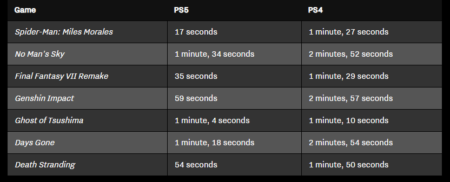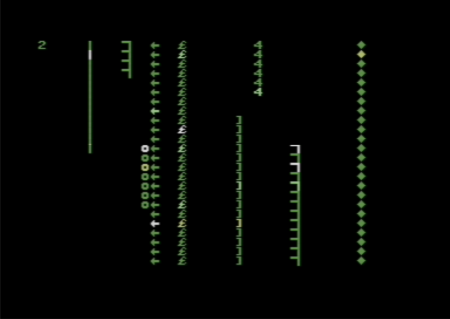Jesper Juul's Blog, page 6
May 19, 2021
Fractal time: Announcing Lyapunovia’21
“Lyapunovia: Displaying the Juiciest Object in Mathematics.
Lyapunovia is a mindbogglingly colorful program that makes pictures from a simple mathematical formula … offering you everything you ever wanted in visual representation of mathematical abstractions.”
-Me in 1992.
This new version came about when I saw that a modern computer – or phone – can easily render a fractal like this in real time using the graphics card.
phone – can easily render a fractal like this in real time using the graphics card.
In this new version, I focused on making the user experience fun, on making it pleasurable to navigate around the fractal image. I have also animated the fractal a bit, so the goal is not to arrive at the final image, but to explore a strange animated object.
BackstoryLyapunov Space fractals were created by Mario Markus in the late 1980’s, and probably popularized by Dewdney’s 1991 article in Scientific American.
and probably popularized by Dewdney’s 1991 article in Scientific American.
Having read the Scientific American article, I wrote the Lyapunovia fractal program for the Commodore Amiga in 1992-93. This was just around the peak of shareware, and users could physically mail me payment for a full version of the program, which I’d dutifully send them on floppy disks. Version 1.5 was released the following year, now supporting new Amiga 1200 and 4000 computers with their fancy new graphics chipsets, and switched to a more convenient donation model. (Here is the original readme file.) I probably sold and received literally *many dozens* of contributions, so I was happy.
After that, a made a small version for long gone BeOS, and dabbled in a PC version.
Lyapunovia had a weird role in my life. It made a tiny bit of money for a poor student, but it also heavily distracted me from actual studying, which in some ways would have been better for me, yet I got hired by my future multimedia workplace MouseHouse because they’d seen the program and called me up. Going back to Lyapunovia gives me an intense feeling of where it was made, “while watching the tiny little bit of blue sky I can see from my room if I push my head flat against the window and look directly up”, as the readme file says.
My later life has become something else – writing books about video game theory, occasionally making games, and continually teaching students to make, think, and write about video games.
My original training though, just before Lyapunovia, was in demo culture, and from that I probably brought the idea that programming (which I enjoy) can also be visible and understandable to non-programmers as well. I have mostly channeled this into games, but why not try the fractal thing gain?
What do fractals mean?In their 1990ish heyday, I think fractals represented both the future, modern technology, and then-new ideas of chaos and emergence. Today there’s something retroish about them. Yes, we know that small formulas can create complex patterns, but the actual speed of modern computers (coming here from the graphics card of your device) makes fractals immediate in a way they were not.
modern technology, and then-new ideas of chaos and emergence. Today there’s something retroish about them. Yes, we know that small formulas can create complex patterns, but the actual speed of modern computers (coming here from the graphics card of your device) makes fractals immediate in a way they were not.
Clearly, I am making choices here about how to represent Lyapunov Space, but that experience is always one of the formulas having an emergent mind of their own. The fractal doesn’t care about us, and I think this gives a feeling of “sublime banality” – a fractal is vast, infinite, and incomprehensible to our human minds, but it also doesn’t ask anything from us. Other words: Alien, reptilian. It’s a lot like deliberately electronic music, which can be read as life-affirming by showing us how we’re either wonderfully alive unlike the mechanical world, or that we’re wonderfully mechanical as well, or that we are freed from having to fall into established categories. Here’s to that.
Programming then and nowThe Amiga program was gigantic, and the mental work was very hard,[image error] figuring out how to do things I did not know how to do; writing and rewriting the code, waiting for the program to render, writing the image saving routines, and so on. This was a huge undertaking for me.
This new version was made quickly (~20 hours), it is pretty small, but as is the case with modern web development, it includes 4 entirely different languages – HTML, CSS, JavaScript, and GLSL. The main challenge here has really been to read up on all the documentation, like the weird limitations of the GLSL version I was using. Thanks to WebGLFundamentals for the best WebGL explanations. I have also focused on designing a pleasurable interface that could be used across a range of devices. The idea of the pleasurable interface wasn’t really common in 1992 (except in games).
May 18, 2021
Game Studies vol 21, issue 1 (20th anniversary)
Yes, Game Studies issue 21/1 is out. The rumors are true, this is the 20th anniversary issue.
Without going overboard reminiscing, I’ll just say I think our major goals were achieved, and that it’s fine how Game Studies is just one journal among many now. I think we helped:
To provide a platform for all kinds of work related to video games – humanities, social science, philosophical, aesthetic, political.To establish video games as a meaningful cultural form (with “aesthetic, cultural and communicative” aspects, as the original header said).To establish that this meaning (and politics) can be found not only with traditional analytical tools, but that new objects of study can call for new tools (yeah, such as looking at the meaning of game rules and interaction, which many people resisted in the beginning).To reflect a field that changed over time.******
Two Decades of Game Studiesby Espen Aarseth
This issue of Game Studies marks the 20th anniversary of the journal.[more]
Animal Mayhem Games and Nonhuman-Oriented Thinkingby Marco Caracciolo
This article discusses a recent strand of videogames that foreground disruptive animal characters in an urban environment. I link this “animal mayhem” to recent debates on the nonhuman, showing that videogames like Goat Simulator and Untitled Goose Game (my case studies) evoke the inherent strangeness of human-nonhuman connectedness.[more]
Beyond the French Touch: The Contestataire Moment in French Adventure Digital Games (1984-1990)by Filip Jankowski
This article attempts to suggest a revision of the historical aesthetic category frequently called the “French Touch.” The article focuses on games that matched the contestataire moment in the history of France from three development circles (Froggy Software, Cobra Soft and François Coulon), arguing that they escape this traditional categorization.[more]
The Child in Games: Representations of Children in Video Games (2009 – 2019)by Emma Reay
This paper examines representations of children in contemporary video games through content analysis. Using a sample of over 500 games published between 2009 and 2019, it identifies the dominant functions of child characters and documents patterns of representation across genres and over time.[more]
“Twere Well It Were Done Quickly”: What Belongs in a Glitchless Speedrun?by Martin Ricksand
This article analyzes speedruns, the practice of beating a game as fast as possible. The article applies theories from the philosophy of sport as well as the philosophy of fiction, and outlines a way of how to adjudicate on what strategies may be employed in different kinds of speedruns.[more]
“Actual history doesn’t take place”: Digital Gaming, Accuracy and Authenticityby Eve Stirling, Jamie WoodThis paper examines university students’ perceptions of how playing historical videogames has affected their understanding of the past. It focuses on how active engagement in gameplay affects perceptions of historical time and sense of place, in particular the relative importance of accuracy and authenticity.[more]
Towards a Model of Objective-Based Reward Systemsby Agata Waszkiewicz, Mateusz Kominiarczuk
The article proposes a model of objective-based reward systems based on Gary Alan Fine’s frame analysis and Jesper Juul’s goal typology. The model reconceptualizes various reward-bound goals commonly encompassed under the categories “quests” and “achievements” in order to show them as non-homogenous and yet not dissimilar.[more]
Book ReviewsReview: Who Are You? Nintendo’s Game Boy Advance Platformby Martin Roth
Who Are You? Nintendo’s Game Boy Advance Platform (2020) by Alex Custodio. Cambridge, Massachusetts & London: MIT Press. ISBN: 9780262044394. pp. 280.[more]
Review: Transnational Play: Piracy, Urban Art, and Mobile Gamesby John Sharp
Transnational Play: Piracy, Urban Art, and Mobile Games (2020) by Anne-Marie Schleiner. Baltimore, Maryland: Project MUSE. ISBN: 9789048543946. pp. 182.[more]
February 23, 2021
Study at the Visual Game & Media Design MA in Copenhagen, March 1st deadline
Please come and study with me at our two-year masters program in Visual Game & Media Design in Copenhagen.
The application process is now open for the Visual Game & Media Design master’s program at the Royal Danish Academy in Copenhagen.
This is a two-year program running from September 1, 2021. The application deadline is March 1st.
Visual Game & Media Design is an intensive two-year program for students wishing to do creative work in game design, visual media, and beyond. During the program, you will continually combine the hands-on creation of digital games, animations, motion graphics, and visual designs with innovative conceptual approaches to game design and storyworld design.
Who can apply?
The program is in English, and is open to all students, Danish and International, with a relevant bachelor’s degree in fields such as graphical design, game design, or 3D modeling. We encourage students with non-traditional backgrounds to apply.
More about the program
To read more about the program, go to the website or email program head Jesper Juul, jjuul@kadk.dk
https://royaldanishacademy.com/programme/visual-game-and-media-design
For more details about the application process: https://royaldanishacademy.com/admission-master
Why study at KADK in Copenhagen?
The Royal Danish Academy is a leading academy in Scandinavia in the fields of architecture, design and conservation. It is located centrally by the Copenhagen harbor.
Copenhagen is a hub for video game development, with a vibrant English-language game development community, and home to both small and large companies such as Playdead, Sybo games, IO Interactive, Tactile, and Unity3D.
KADK works closely with (and is situated next to) the National Film School of Denmark, and with the professional TV and Film community in Denmark.
January 4, 2021
Game Studies vol 20, issue 4 is out
For your theoretical traversal, Game Studies volume 20, issue 4.
Articles
Assessing Toxic Behaviour in Dead by Daylight : Perceptions and Factors of Toxicity According to the Game’s Official Subreddit Contributors
by Patrick Deslauriers, Laura Iseut Lafrance St-Martin, Maude Bonenfant
This article identifies 5 key aggravating factors that may lead to toxic in-game interactions according to players’ perception. We studied the Dead by Daylight community using a content analysis of players’ conversations on the game’s official subreddit to help us better understand how they perceive potentially toxic behaviour inside of the game.[more]
*
Dungeon Pirates of the Postcolonial Seas. Domination, Necropolitics, Subsumption and Critical Play in Pillars of Eternity 2: Deadfire
by Mateusz Felczak
This article is a close reading of a cRPG directly approaching the topic of colonialism in the fantasy setting. Its main goal is to present a framework inspired by the ideas of Achille Mbembe to assess the difficulties in applying potential elements of critical play that would transfer from the narrative into the game’s mechanics.[more]
*
Negotiating Textures of Digital Play: Gameplay and the Production of Space
by Justyna Janik
This paper analyzes the mechanisms of communication connecting different types of actant during the moment of digital gameplay. Gameplay is here interpreted in the context of Lefebvre’s concept of texture, developing a view of gameplay as a performative and communicative experience.[more]
*
Grades on Games: Gaming Preferences and Weekly Studying on College GPAs
by Kelsey Prena, Andrew J. Weaver
This study surveys college undergraduates to explore patterns across gaming, studying, and academic performance. Time studying on the weekends (positive), gender, and preferences for action games (negative) were significant predictors of academic performance. These results and complimentary results are discussed.[more]
*
Like Seeing Yourself in the Mirror? Solitary Role-Play as Performance and Pretend Play
by Jaakko Stenros, Tanja Sihvonen
This article analyzes the single-player digital role-playing game as performance and pretend play through character creation, character interaction, and game mechanics. These games are positioned as toys that are “pretend-played” with expectations. Players’ extended “pretend play” is conceptualized and analyzed as queering.[more]
*
Player customization, competence and team discourse: exploring player identity (co)construction in Counter-Strike: Global Offensive
by Matilda Ståhl, Fredrik Rusk
This ethnographic study explores a participant’s perspective on local player identity (co)construction in Counter Strike: Global Offensive (CS:GO). Although there are individual variances, the identities (co)constructed orient towards a perceived competent player identity shaped by technomasculine norms in online game culture.[more]
*
From Dead-end to Cutting Edge: Using FMV Design Patterns to Jumpstart a Video Revival
by Carl Therrien, Cindy Poremba, Jean-Charles Ray
This paper argues that design patterns from full motion videogames are a useful source of design knowledge that can scaffold the development of new works. It presents results from a historical analysis of over ninety games using live-action full motion video. Methods for re-integrating this knowledge back into the design process are explored.[more]
*
(Re)Mastering Dark Souls
by Timothy Welsh
This paper argues that the aesthetic experience of playing Dark Souls changes over time as the player community shares its collective mastery of the game. It analyses how late-stage player practices often replace exploration and discovery with efficiency and productivity. In conclusion it raises the need for a historically situated poetics of play.[more]
Book Reviews
Shira Chess, Play Like a Feminist.
by Esther MacCallum-Stewart
Play like a Feminist. (2020) by Shira Chess. Cambridge, Massachusetts: MIT Press. ISBN: 9780262044387. 184 pp.[more]
December 22, 2020
The Pragmatic (Console) Generation
The new console generation really is different this time. I’ve long been  interested in how video game consoles have – at least since the Nintendo 64 – consistently been promoted on the promise that now, graphics were being revolutionized and we would finally be able to play video games that were “just like movies”.
interested in how video game consoles have – at least since the Nintendo 64 – consistently been promoted on the promise that now, graphics were being revolutionized and we would finally be able to play video games that were “just like movies”.
With the PlayStation 5 and Xbox Series S|X, the main story is a different one: load times. For example, The Verge’s PlayStation 5 review lists “Games load quickly and run smoothly” as a top positive point, and features a table comparing load times, but graphical capabilities are a bit more theoretical – do you have a 4K TV?
 The load time comparison we did not know we needed
The load time comparison we did not know we neededThe Xbox Series S|X get a similar treatment, with load times getting top billing in the Verge review. It is definitely becoming harder for non-experts to tell console generations apart graphically.
Sony and Microsoft are actually catching up to Nintendo here. Where Xbox One and PlayStation 4 were in many ways painful hells of just-wait-30-minutes-for-the-update-before-playing, one of the selling points of the Nintendo Switch really was the near-instantaneous launch times, and instant sleep and wake from sleep.
Interestingly, this comes at a time where the game industry at large has begun to talk of “quality of life updates” – the kind of update that doesn’t add features, but just removes some time management or other hassles from the player. The primary barrier to playing is almost always time, and the PlayStation 5 focus on activities is a way for a console to compete with the bite-sized chunks of playtime that we get for free on our phones, but which have been hard to come by on consoles.
Generic Hardware for Unique Experiences
 The other apparent thing now is the sheer genericness of the hardware. The Xbox and PlayStations are now both just boxes of ever-so-slightly modified generic PC components, AMD RDNA 2 CPU and GPU, SSD and so on. I think this correlates with a de-emphasizing of console generations, with a larger expectation of backwards compatibility and mid-generation updates (PS4 Pro, Xbox One S|X).
The other apparent thing now is the sheer genericness of the hardware. The Xbox and PlayStations are now both just boxes of ever-so-slightly modified generic PC components, AMD RDNA 2 CPU and GPU, SSD and so on. I think this correlates with a de-emphasizing of console generations, with a larger expectation of backwards compatibility and mid-generation updates (PS4 Pro, Xbox One S|X).
In parallel, the commodification of phone hardware means that the Switch is basically the hardware of large Android phone.
So it’s a pragmatic generation, one of making-do, not of flashy new graphics, not of fancy new technology. It’s just a generation of casualization, of making games fit better into people’s lives.
September 22, 2020
Game Studies 20/3 is out
For your theoretical consideration: Game Studies volume 20, issue 3.
“Elves are Jews with Pointy Ears and Gay Magic”: White Nationalist Readings of The Elder Scrolls V: Skyrim
by Kristian A. Bjørkelo
This article explores how White Nationalists on Stormfront interpret (decode) Skyrim in accordance with their own worldview and the affordances of the game. In their eyes the Nords are a Germanic people and “Elves are Jews with pointy ears and gay magic”.[more]
A Typology of Imperative Game Goals
by Michael S. Debus, José P. Zagal, Rogelio E. Cardona-Rivera
This paper presents a typology of game goals to fill a gap in the literature regarding kinds of goals in games and how they are interrelated. We focus on ludic goals, instead of player created or narrative goals. The typology can be used for describing goal structures, how higher-level goals relate to lower levels and analyzing a games’ design.[more]
Sorry, Wrong Apocalypse: Horizon Zero Dawn, Heaven’s Vault, and the Ecocritical Videogame
by Megan Condis
This article is an examination of the ecocritical potential of Horizon Zero Dawn (Guerilla Games, 2017) and Heaven’s Vault (inkle, 2019). I argue that to properly depict climate change, we must develop new narrative formats and game mechanics that showcase “slow violence” (Nixon 2011).[more]
The New Lara Phenomenon: A Postfeminist Analysis of Rise of the Tomb Raider
by Janine Engelbrecht
Lara Croft, the heroine of the popular Tomb Raider videogame series, has undergone a major transformation after the series reboot 2013. The new representation of Lara Croft is a clear departure from the postfeminist action heroine archetype and is replicated in other post-2013 videogames with female protagonists.[more]
by Frazer Heritage
This paper argues for applying corpus linguistics to videogames; a method that can reveal textual patterns in a corpus of games. This method is applied to gender representation in an example corpus, offering quantitative analysis of how discourses around social identities are (re)produced.[more]
The Historical Problem Space Framework: Games as a Historical Medium
by Jeremiah McCall
Historical games present the past in terms of historical problem spaces: player agents with roles and goals that are contextualized in a virtual world whose features enable and constrain player action. The HPS framework helps us better understand the gamic medium of history, with utility for historical game scholars, educators, and game designers.[more]
Reconsidering The Grasshopper: On the Reception of Bernard Suits in Game Studies
by Liam Mitchell
While Bernard Suits’s landmark book The Grasshopper is as playful as it is rigorous, scholars in game studies tend to reference it only for its apparently bloodless definition of gameplay. This paper responds to this reception by highlighting the productive ambiguities of the text, particularly the relationship between games and society.[more]
Janky Controls and Embodied Play: Disrupting the Cybernetic Gameplay Circuit
by M. D. Schmalzer
This article develops the concept of janky controls to disrupt the assumed cybernetic connection of player and game. Through this disruption, standard notions of player subjectivity is also disrupted allowing for more diverse players and videogame design practices.[more]
August 24, 2020
Interviewed for the Professor Game Podcast
Rob Alvarez Bucholska was kind enough to interview me for his Professor Game podcast.
The conversation touches on a lot of things I don’t usually talk about, like writing method, game design methods, and the relation between game-making and theory. I hope you enjoy it.
Direct link here.
August 5, 2020
Bernie De Koven’s The Infinite Playground is out
 I am happy to announce that Bernie De Koven’s final book is now out, courtesy of Holly Gramazio, Celia Pearce, and Eric Zimmerman. I contributed a small essay about what it was like to play with Bernie.
I am happy to announce that Bernie De Koven’s final book is now out, courtesy of Holly Gramazio, Celia Pearce, and Eric Zimmerman. I contributed a small essay about what it was like to play with Bernie.
The Infinite Playground is available from MIT Press and elsewhere.
https://mitpress.mit.edu/books/infinite-playground
April 28, 2020
Using trademarked objects in a video game

There’s no shortage of legal issues in video games, but the recent court case AM General LLC v. Activision Blizzard, Inc. et al, No. 1:2017cv08644 – Document 218 (S.D.N.Y. 2020) was decided in a way that surprised me:
The judge ruled that Activision Blizzard can use Humvees in Call of Duty without any kind of license from the manufacturer, given that it ties in with an artistic goal and does not mislead about the source of the work: “if realism is an artistic goal, then the presence in Modern Warfare games of vehicles employed by actual militaries undoubtedly furthers that goal.”
Military vehicles would not be my choice of example, but it’s an interesting twist.
However, and as always, even with this ruling, this remains the kind of freedom of speech best exercised with a large legal team on your side.
April 3, 2020
Petscii Jetski – a C64 game in BASIC

Instigated by Nick Montfort, we returned to the Commodore 64 to write a 10-line game & visual poem.
A very long time ago I used to be into C64 programming, at first BASIC and later assembly. I have severe existential reservations about going back to “things that I gave up years ago”, but it really was like coming home in a holy & broken sort of way.
In a world full of ever-shifting Javascript preprocessors and package managers, a simple predictable machine is a comfort, and yet the BASIC implementation is excruciatingly slow and full of strange decisions. For example, on this 1 Mhz machine, the BASIC implementation only runs floating point, which is really slow. This meant that the C64 was special in that assembly was perhaps a 1000 times faster than BASIC, a much bigger difference than in modern languages.
Play Petscii Jetski online at https://nickm.com/montfort_juul/petscii_jetski/ and read a detailed discussion of BASIC optimization at https://nickm.com/trope_tank/TROPE-20-01.pdf



